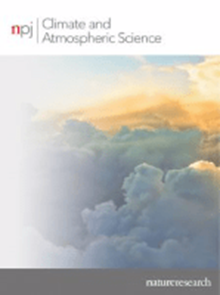是什么让 2023 年和 2024 年连续成为最热的年份?
IF 8.5
1区 地球科学
Q1 METEOROLOGY & ATMOSPHERIC SCIENCES
引用次数: 0
摘要
全球地表温度在 2023 年创下历史新高。通过使用全球气候模型,我们发现厄尔尼诺现象和外热带变率使 2023 年成为背景升温 0.2 ℃/十年的最热年份。我们在 2024 年 7 月初始化的模型正确预测,2024 年将成为有记录以来最热的一年。本文章由计算机程序翻译,如有差异,请以英文原文为准。

What made 2023 and 2024 the hottest years in a row?
Global surface temperature reached a record high in 2023. Using a global climate model, we show that El Niño along with extratropical variability boosted 2023 to be the hottest year on a background warming of 0.2 °C/decade. Our model initialized in July 2024 correctly predicted that 2024 was on track to become yet another hottest year on record.
求助全文
通过发布文献求助,成功后即可免费获取论文全文。
去求助
来源期刊

npj Climate and Atmospheric Science
Earth and Planetary Sciences-Atmospheric Science
CiteScore
8.80
自引率
3.30%
发文量
87
审稿时长
21 weeks
期刊介绍:
npj Climate and Atmospheric Science is an open-access journal encompassing the relevant physical, chemical, and biological aspects of atmospheric and climate science. The journal places particular emphasis on regional studies that unveil new insights into specific localities, including examinations of local atmospheric composition, such as aerosols.
The range of topics covered by the journal includes climate dynamics, climate variability, weather and climate prediction, climate change, ocean dynamics, weather extremes, air pollution, atmospheric chemistry (including aerosols), the hydrological cycle, and atmosphere–ocean and atmosphere–land interactions. The journal welcomes studies employing a diverse array of methods, including numerical and statistical modeling, the development and application of in situ observational techniques, remote sensing, and the development or evaluation of new reanalyses.
 求助内容:
求助内容: 应助结果提醒方式:
应助结果提醒方式:


